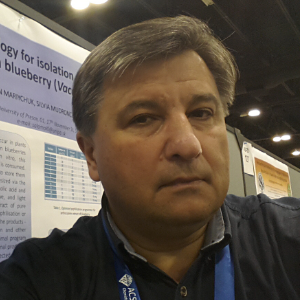Title : Chamomile (Matricaria recutita L.) – Natural substances and their curative effects
Abstract:
Chamomile, Matricaria recutita L. was apparently sacred to the Ancient Egyptians, according to Hippocrates who ‘dedicated it to the Sun because it cured agues’. By the seventeenth century, chamomile was well established in monastery and domestic gardens as a medicine and beauty herb – it had been taken to the New World by the Pilgrim Fathers.The essential oil is distilled from the freshly dried flowers (Flos Chamomillae); the oil of chamomile is pastel dark bluish and has a very strong smell. Application fields include dermatology (Figure 1), stomatology, otolaryngology, internal medicine, in particular gastroenterology, pulmology, pediatry, and radiotherapy. The therapeutic effectiveness is in total due to the combined pharmacological and biochemical effects of several chamomile constituents, especially /-/-α-bisabolol. Impulse for the totally new valuation of the drug production has become if the identification of four chief chemical types of chamomile different by the qualitative – quantitative composition of chemical compounds in the essential oil was carried out. Certain types of chamomile contain up to 50 % /-/-α-bisabolol in the essential oil; however, in the majority of types the oxides are more abundant. Gradually, the new chamomile variety “LIANKA” was bred at the University of Presov, Slovakia in last years (Salamon et al, 2016). The essential oils of plants were extracted by hydro-distillation and analyzed by gas (GC) and liquid (LC) chromatography. The variety is characterized by its high percentage of sequiterpenes: (/-/-α-bisabolol [54 ± 2 %], chamazulene [18 ± 2 %], the low contents of /-/-α bisabololoxides A and B [< 3 %] and essential oil content are from 0.65 to 0.85 %). The main characteristic constituents of chamomile flowers are flavone derivatives: apigenin-7-glucoside is contained 0.33 ± 0.01 and the total quantity of apigenins 0.48 ± 0.02 [% of chamomile dry flowers]. Chamomile plants are picked only in the stage of developed anthodia, using various types of harvesters (Figure 2). Sorting the chamomile biomass is performed by sorting machines. Drying is provided mostly on hot-air dries. The dry chamomile drug of the first quality is delivered directly to the processing enterprises. The remaining plant material and the waste are used to produce essential oil and extracts.



